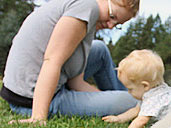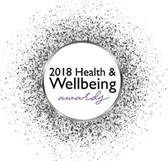My 20202020 was a year like no other. It was completely unexpected and included things I never thought I would do in my life.
An incredible yearGiven all the limits and constraints of the year, I found it incredible in many ways. Some things of course I'm hoping we move on from. But I've learned so much, and continue to learn from all that has been thrown at us. My meditation practice allows me a welcome space to sit with the tragedy of the year, and the heightened visibility of inequality and privilege demonstrated through the virus's progression through different communities and countries and the BLM movements. A clear re-evaluation of life and what to do with the privilege that I have is an ongoing project. Perhaps we've all come to value our health and way of life more than ever before. We can more easily recognise the gifts of our health and our privilege and ensure we use these gifts well in our daily lives. Top tipsStart small, for achievable and sustainable progress. From how we make ourselves more resilient in our own health, through our lifestyle and dietary choices, to how we interact with others and treat our neighbours and engage with our local communities. My top tips for every day:
There are lessons for each of us from 2020. If any positives are to come of last year, let's find them and take them to heart.
0 Comments
I'm biased I know, but I think most people could benefit from yoga practice! I work with a lot of mums, especially in my private yoga therapy work, where women come to me without much time or space for themselves, and have a range of physical, mental and emotional issues such as stiffness, aches on one side from carrying children on one hip, stress through the shoulders, poor sleep, over-eating, worrying, and an over-active mind that refuses to slow down at the end of the day.
These are common complaints but particularly so for mums whose days aren't their own anymore and who struggle to find time to take care of themselves. Yoga doesn't have to be a weekly class, although this is often the best way to ensure you actually make it on to your mat at least once a week and spend a good hour doing a full yoga practice. Yoga can also be fitted in to your busy schedule, requiring perhaps as little as 15-20 minutes a day to help keep you physically, mentally and emotionally supported. Think of how you might tend to a garden - keeping it tended to little and often is as good, if not better, than a big session every now and again to keep it all under control. A practice that is customised for you is ideal, incorporating some physical postures to help energise the body, stretch and release tension, strengthen the posture to help alleviate aches and pains. Plus perhaps some breathing work to settle the mind and restore balance, and perhaps even meditation if interested (which has well known stress-relieving and healthful attributes). All of these practices will help you create and maintain some well-earned space for yourself, and can be fitted in to those small pockets of time once the kids have gone to bed, when they are napping, when they are watching tv, or before you go to bed. In my group classes I always encourage students to try some yoga practice at home if they are interested. Part-way through the term, I'll often offer them a small handout with a short practice to try for themselves at home. Sometimes students keep it up and come back weeks or months later reporting how much more benefit they get from yoga once they have started regular practice at home. Of course a daily healthful practice doesn't just have to be yoga, there are other things that you might find you enjoy that keep you motivated to continue with it. But what better way to nurture your health and wellbeing than by giving yourself the gift of a short yoga practice a few times a week to help maintain balance and health in your life. Finding a yoga class or yoga practice that suits you is a fine art and finding a range of postures that are right for you can depend on what you are looking for from yoga.
Some yoga postures are physically demanding, and some are completely inaccessible to many, but even postures that are relatively easy to get into initially, can actually be some of the toughest. This yoga postures website www.santosha.com lists a range of postures and then grades them based on how hard it thinks they are. Interestingly it gives 'Savasana' the corpse or lying relaxtion pose the easiest grade. I At first glance you could easily agree with this rating, surely you just have to lie there? However I regularly see students in my yoga classes struggling with this pose. It is a personal challenge to many to actually lie and relax, close the eyes and keep the mind attentive while the body releases onto the mat. People can fall asleep in a class in this posture, indicating that they are over-tired rather than able to relax the body. Or they find it hard to close the eyes or feel comfortable lying face up. Or their back bothers them and they don't find it relaxing. Or they just can't let go of the tension in their shoulders and hips. It is a tough posture in many ways, and the stillness of the mind, one of the goals of yoga, is challenged here as the body isn't moving to provide focus and distraction. Postures, or asana as yoga terms them, can be deceptively difficult, and getting into them is only the very first step of practicing yoga. Deepening the work in the more 'simple' postures, advancing your work in a seemingly straightforward asana rather than trying more advanced asana in a physical way can often lead to much greater rewards. So finding a class with advanced postures isn't always the way to develop your own yoga practice. Advancing your work in the primary yoga postures is a good approach for many practitioners rather than reaching for the headstand. And it is this basis which makes yoga accessible to everyone, not just those who are super bendy or super strong! Back to homepage Chelsea footballers are partial to a bedtime yoga practice to help sleep according to a BBC Radio 4 interview on Women's hour today. To help sleep and aid relaxation, some players have been advised to lie with their legs up the wall, bottom close to the wall, lying on their back, for a few minutes before bed.
Raising the legs above the heart in an inverted position like this is supposed to calm the parasympathetic nervous system, relaxing and settling the system to aid relaxation and sleep. It is a restful position (if you find it comfortable and have strong enough legs and back to hold it comfortably for several minutes). Variations of this posture are suggested if you can't relax in this pose. According the the sleep specialist , it is common to wake up 10-15 times a night anyway, a throw back to when we lived in caves and had to check that all was well with the world and we were not in danger. Women in late-stage pregnancy and new mums will typically wake up twice as much as this, more self-preservation and baby protection taking place it is assumed. Top tips to improve your chances of getting a good night's sleep included: - Incorporating a gentle, restful yoga sequence or meditation before bed - Not keeping a clock in the room that is visible to you, and don't check the time if you do wake up, just try to go back to sleep - Keep the room slightly cooler than the rest of the house - Prepare for sleep well, write down and 'to-do's' before getting into bed so you don't worry about them in the night. Hope this helps! If you are one of those lucky people who can sleep anywhere, then you are the envy of many. I'm usually okay except when there seems to be lots going on, or when the circumstances are less than ideal. So here is the challenge which I found myself in recently...
Staying at a friends rural flat the other night, the local farmer who was also the landlord, was having a get together downstairs with other people from the valley. They were singing folk songs, there was a guitar, and they were directly beneath the bedroom where I was sleeping. Around midnight, they remembered the magnificent TUBA, and starting to provide a 'pump, pump, pump, pa-pa-pa-pump' richness to the songs. Sleep was needless to say not happening easily! So three steps were employed to help... Step 1 - ear plugs. There was no blocking out the catchy tunes, but muffling would definitely help, and ear plugs help to tune you in to the sound of your own breathing rather than the sounds of the nearby party. Step 2 - yoga breathing techniques. Gentle ujayii 'whispering breath' in a slow rhythmic pace to help relax the body, focus the mind in on more calming thoughts (beyond the fantasies of the party-goers remembering slumbering neighbours and quietly all ending the music) and gentle breath-pauses to comfortably encourage a more sleep inducing breath. Step 3 - counting the breath. Like counting sheep (and counting sheep can help too) counting the number of breaths taken and trying to get up to 30-or so, and then counting back down again. Keeping count is harder than you might think but again it focuses your thoughts rather than getting annoyed or caught up in other stories. These simple techniques left me fast asleep shortly afterwards, leaving the magical tuba to fill the valley with comical rhythms that I'm sure kept other would-be-sleeping neighbours awake far longer than they would have liked. Yoga has much to offer those who suffer from sleeping difficulties, with either short-term problems, or longer term difficulties where a more structured programme of yoga can be used. Typically you would try including very gentle, calming postures before bed, or specially selected postures earlier in the day that help reduce disturbances in the body or energy levels that can make sleep difficult. A personal yoga programme (yoga therapy) can be hugely helpful to address your sleep issues and help sleep come more easily. A short daily yoga practice can greatly ease the ability to fall asleep and stay asleep the whole night. Most of us need more and better quality sleep, and this is an often overlooked aspect of our health. This morning on Radio 4 they mentioned the Sleep Scotland initiative which is being promoted to help address this problem and highlight the issue, especially as a serious issue in children. Another thing to bear in mind is that not everyone needs the same amount of sleep, especially as adults, and many need less than perhaps they think they do. But if you find yourself tired in the daytime, then too little or too much sleep might be an issue for you depending on your constitution. There are many things that are available to help, including yoga, but one I don't recommend is of course the tuba, unless it is your favourite hobby in which case I'm willing to stand corrected! |
More blog articles >Categories
All
Archives
July 2024
|
|
Bristol YogaSpace Ltd
Princes Place, Bishopston Just off Gloucester Road Bristol BS7 8NP |
|




 RSS Feed
RSS Feed

